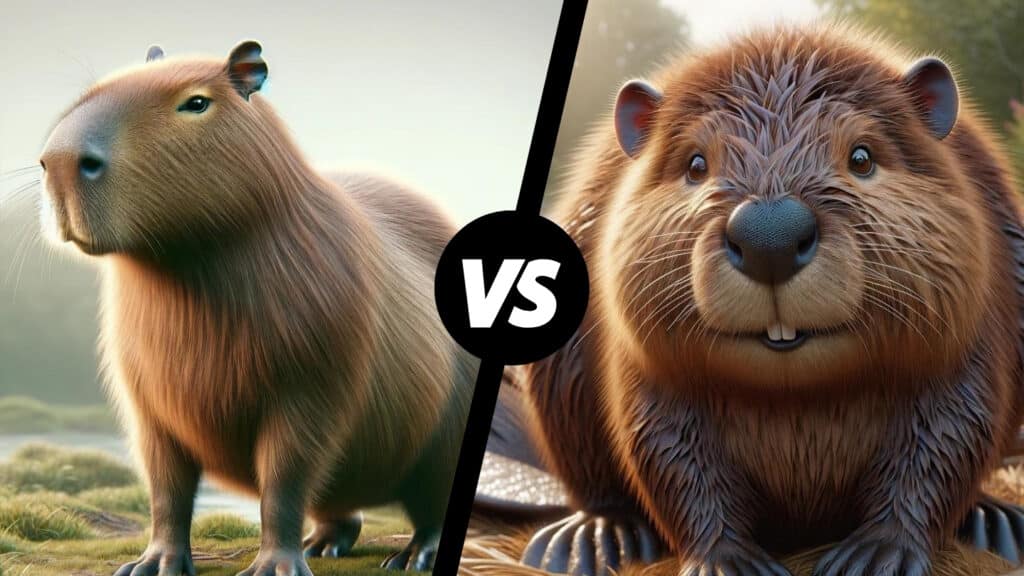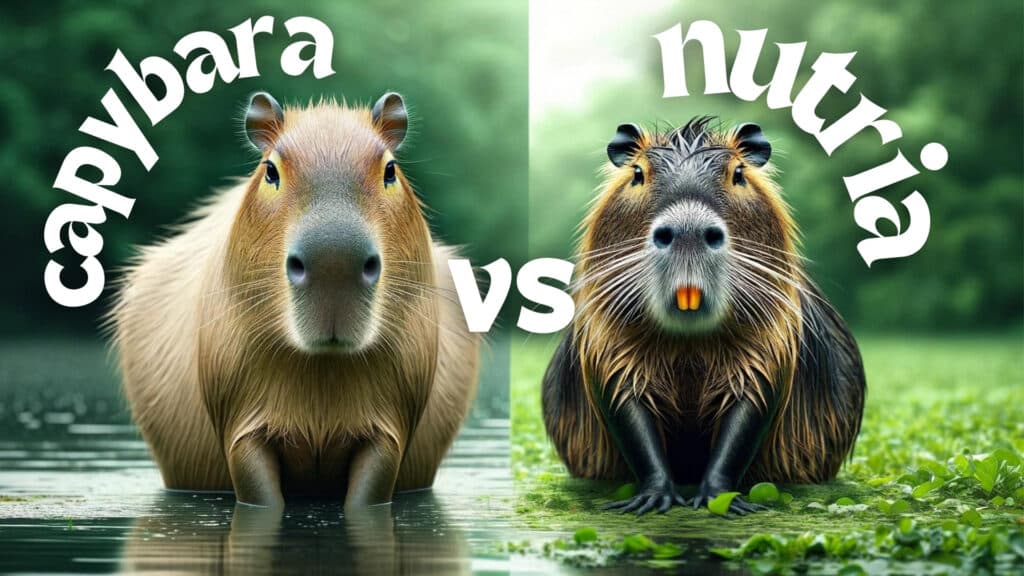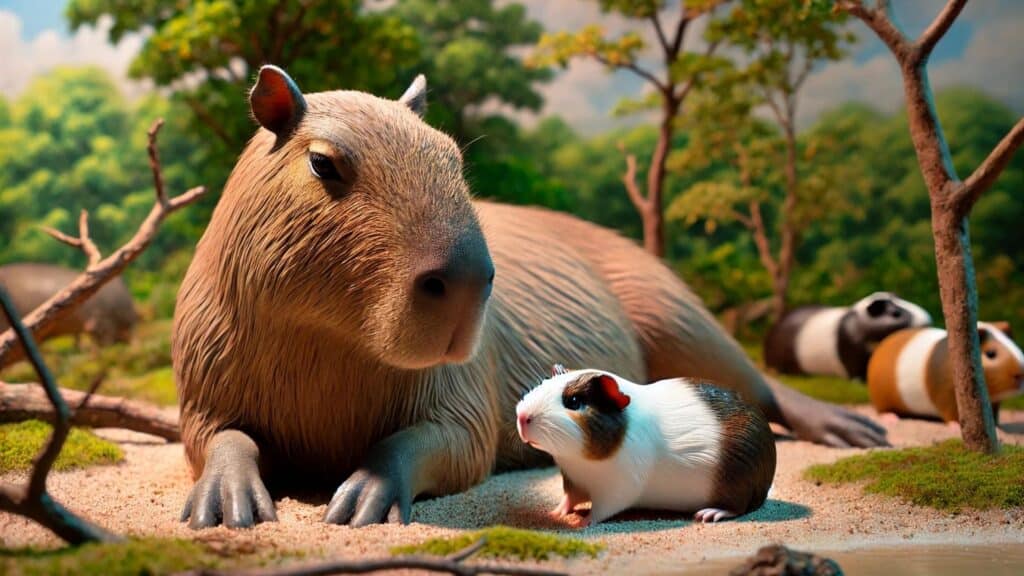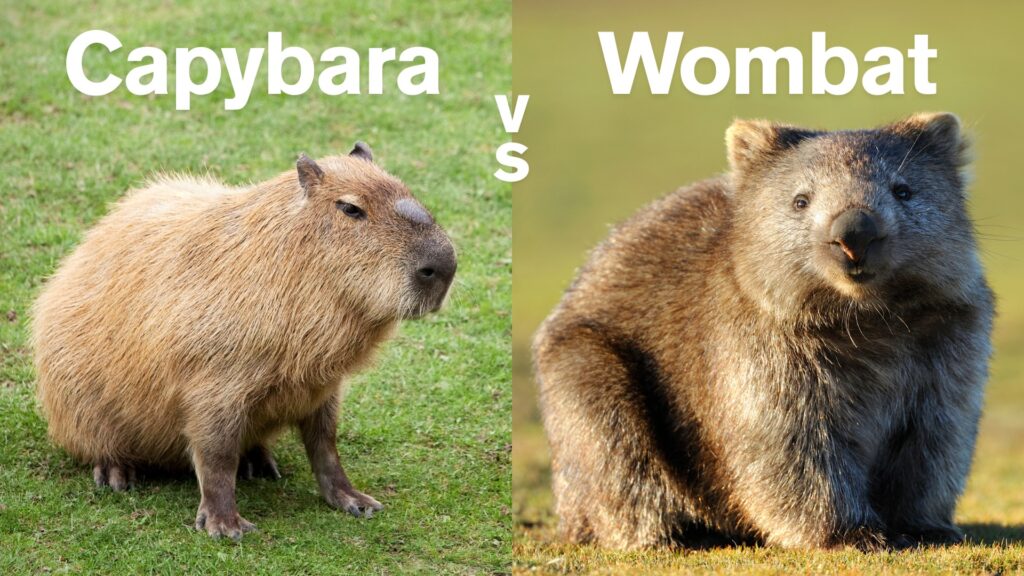The biggest difference is that a capybara is a giant, semi-aquatic rodent from South America, while a marmot is a ground-dwelling, burrowing rodent of the squirrel family found across the Northern Hemisphere. Capybaras are built for swimming and social group living, whereas marmots thrive in underground colonies and depend on hibernation for survival.
Main Key Differences
| Area | Capybara | Marmot |
|---|---|---|
| Size & Build | The largest rodent in the world, reaching 1.0–1.3 m in length and weighing 35–66 kg or more. Stout body, short legs, and partially webbed feet. | Medium-sized rodents, usually 40–70 cm long and weighing 2–11 kg. Compact body with strong claws for digging. |
| Habitat & Ecology | Semi-aquatic, found near rivers, lakes, and marshes in South America. Water is central to their lifestyle. | Terrestrial, living in burrows in open grasslands, alpine meadows, and mountainous regions of North America, Europe, and Asia. |
| Social Structure | Highly social, living in herds of 10–20, sometimes exceeding 50–100 individuals. | Social within colonies, but group sizes are smaller, with each colony organized around burrows. |
| Behavioral Adaptations | Strong swimmers, graze on aquatic plants and grasses, rely on water for safety. | Adapted for hibernation, store fat in summer, whistle alarm calls to warn of predators. |
| Temperament | Calm, tolerant, and often docile around both animals and humans. | Wary, alert, and quick to retreat into burrows when threatened. |
Comparison Table
| Category | Capybara | Marmot |
|---|---|---|
| Kingdom | Animalia | Animalia |
| Phylum | Chordata | Chordata |
| Class | Mammalia | Mammalia |
| Order | Rodentia | Rodentia |
| Family | Caviidae | Sciuridae |
| Genus | Hydrochoerus | Marmota |
| Species | Hydrochoerus hydrochaeris | Varies (e.g., M. marmota, M. flaviventer) |
| Grooming | Frequent social grooming | Limited grooming, more focused on burrow cleanliness |
| Life Expectancy | 8–10 years wild, up to 12 in captivity | 10–15 years depending on species |
| Hunting Ability | None, strictly herbivorous | None, primarily herbivorous |
| Loneliness | Thrive in large herds | Prefer colonies but tolerate some solitude |
| Space | Need open water and grazing land | Require burrow systems and alpine meadows |
| Affection | Gentle, tolerant of close contact | Cautious, affectionate mainly within colonies |
| Protection | Escape through water, group vigilance | Protection through burrows and alarm calls |
| Energy | Moderate, with periods of rest and grazing | Seasonal—high activity in summer, dormant in winter |
| Weight | 35–66 kg | 2–11 kg |
| Height/Size | 1.0–1.3 m length, ~50–60 cm tall | 40–70 cm length |
| Physical Characteristics | Barrel-shaped, webbed feet, short tail, coarse fur | Stocky, strong claws, bushy fur, longer tail |
Behavior
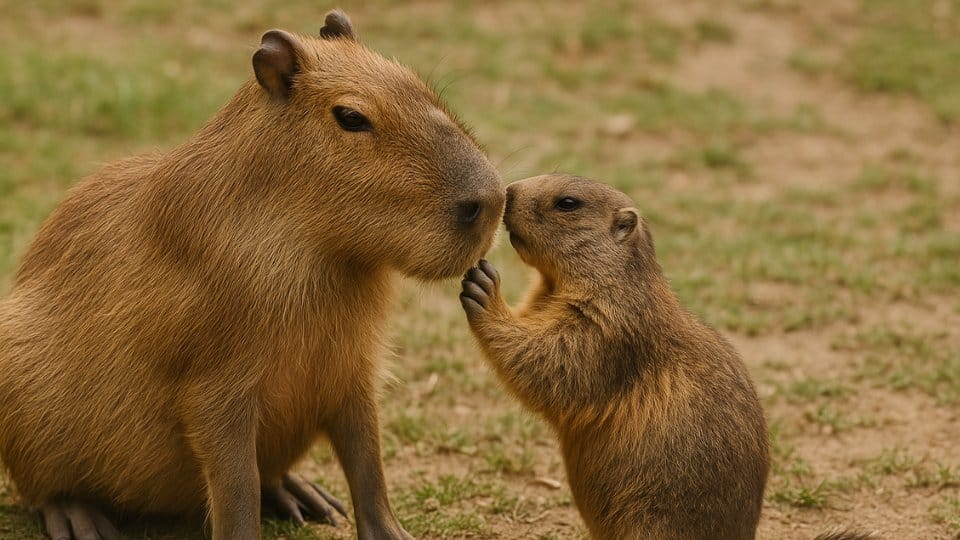
Capybara: Capybaras are semi-aquatic animals that spend a large part of their lives in or near water. They graze on grasses and aquatic plants and retreat to water to avoid predators. Their social life is highly organized, with groups cooperating in grooming, resting, and vigilance.
Marmot: Marmots are ground-dwellers that dig complex burrow systems, which they use for sleeping, rearing young, and surviving harsh winters. They hibernate for months, depending on climate, and rely on alarm whistles and burrow safety to survive predator threats.
When looking at other rodent comparisons, it’s interesting to see how capybaras relate to different species like wombats as well.
Personality
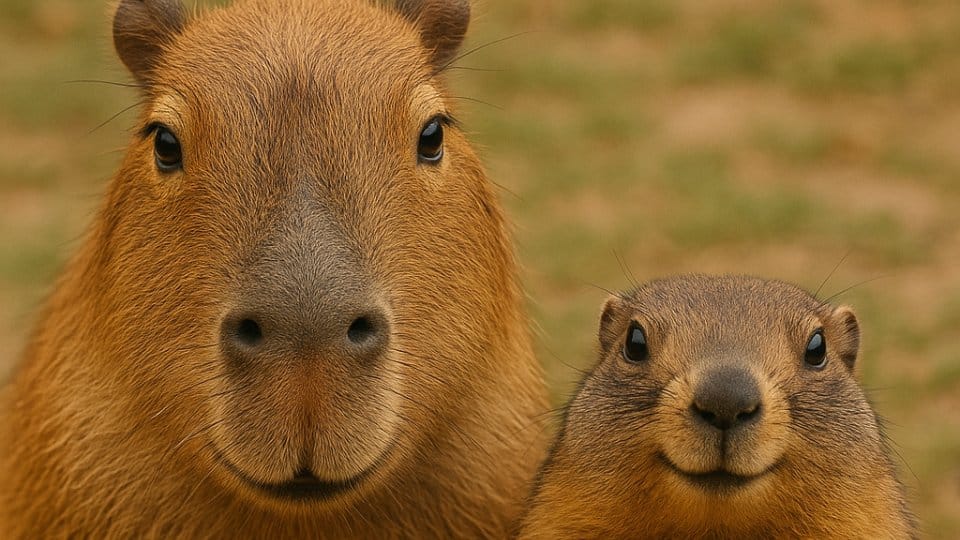
Capybara: Known for their calm and tolerant nature, capybaras are often described as gentle giants. They coexist peacefully with many animal species, even allowing birds and monkeys to sit on them. Their relaxed temperament makes them unusually approachable for wild animals.
Marmot: Marmots are more cautious and alert, preferring to keep their distance. They stand upright to watch for danger and quickly disappear into burrows at signs of threat. While social within their colonies, their relationship with outsiders is far less tolerant than that of capybaras.
Readers often wonder how capybaras stack up against smaller animals such as guinea pigs, which share some physical traits but live very different lives.
Intelligence
Capybara: Capybaras demonstrate social intelligence through group living, recognizing individuals, and coordinating activities such as feeding, grooming, and keeping watch. Their use of vocal signals and scent glands reflects advanced communication.
Marmot: Marmots show ecological intelligence, creating intricate burrow systems, storing fat for hibernation, and teaching young to respond to alarm calls. Their seasonal behaviors show remarkable adaptation to changing environments.
Swimming Power
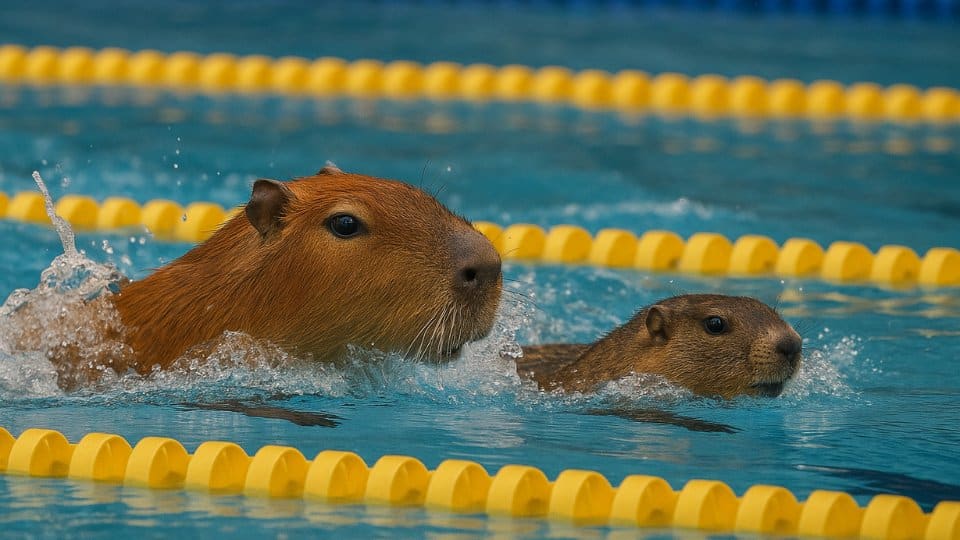
Capybara: Capybaras are natural swimmers. Their partially webbed feet and streamlined body allow them to move gracefully in water. They can stay submerged for several minutes, using water as both a feeding ground and an escape route.
Marmot: Marmots are not swimmers. Their physical adaptations focus on digging and climbing rather than moving through water. Swimming plays no role in their lifestyle.
There are also comparisons between capybaras and semi-aquatic animals like nutria, since both thrive in wetland habitats and share overlapping behaviors.
Running Speed
Capybara: Capybaras can run at a surprising pace for short distances, but due to their size, they rely more on water for safety than sustained running.
Marmot: Marmots are nimble runners relative to their size, darting quickly back to burrows when alarmed. Their speed is vital for evading predators in open terrain.
Another common question is how capybaras compare with hardworking rodents such as beavers, especially when it comes to habitat building and social interaction.
Body Language
Capybara: Body language is subtle but highly social: physical closeness, grooming, resting in groups, mutual touching, and relatively low aggression (especially among group members). They will often sit partly submerged or with just their eyes and nostrils above water when resting, signaling a relaxed but alert posture.
Marmot: Body language is more defensive and alert. Marmots often stand upright like sentinels, scanning for danger. When threatened, they freeze momentarily, then issue high-pitched alarm calls before rushing back into burrows. Their tail position and quick movements reveal stress or awareness of predators.
Final Thoughts
Capybaras and marmots may both be rodents, but they represent two completely different survival strategies. Capybaras are water-loving giants of the tropics, thriving in large herds and using rivers for safety. Marmots are alpine diggers, built for burrows, hibernation, and life in open highland meadows.
Both species highlight the incredible adaptability of rodents, but when you compare them side by side, it’s clear: the capybara is a creature of calm waters and social bonds, while the marmot is a sentinel of the mountains and master of underground survival.
